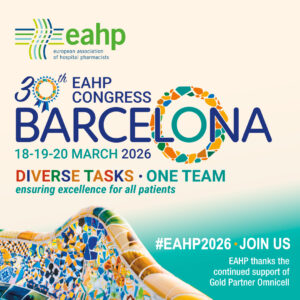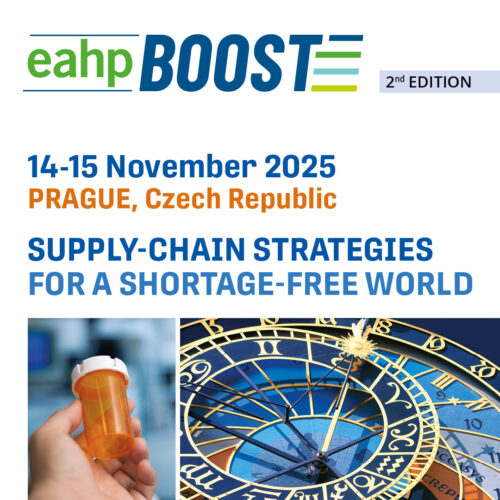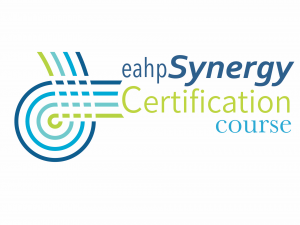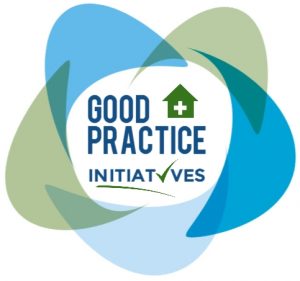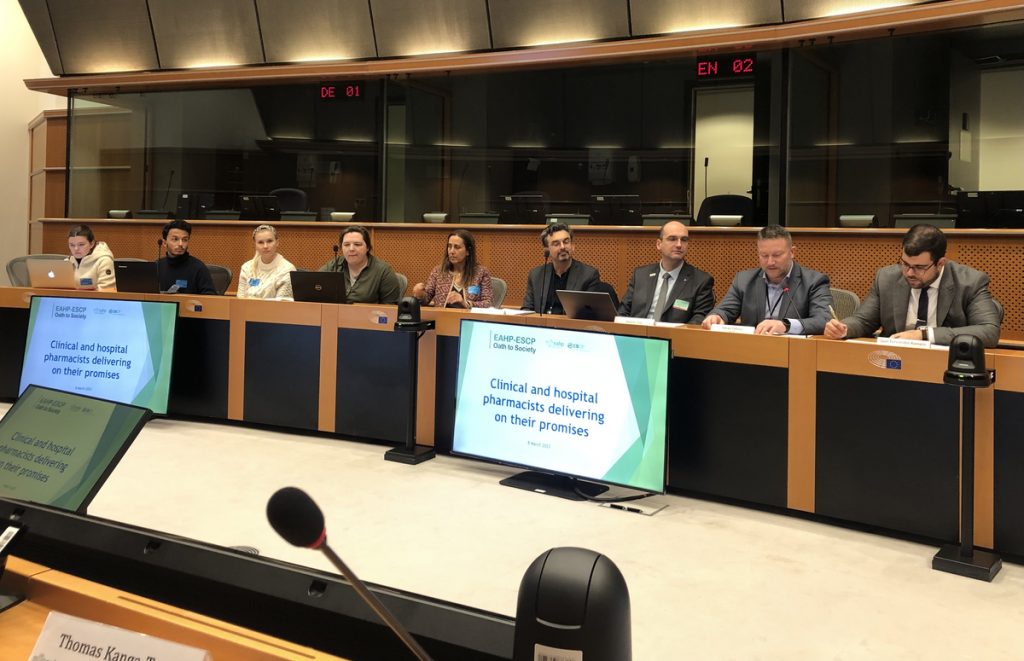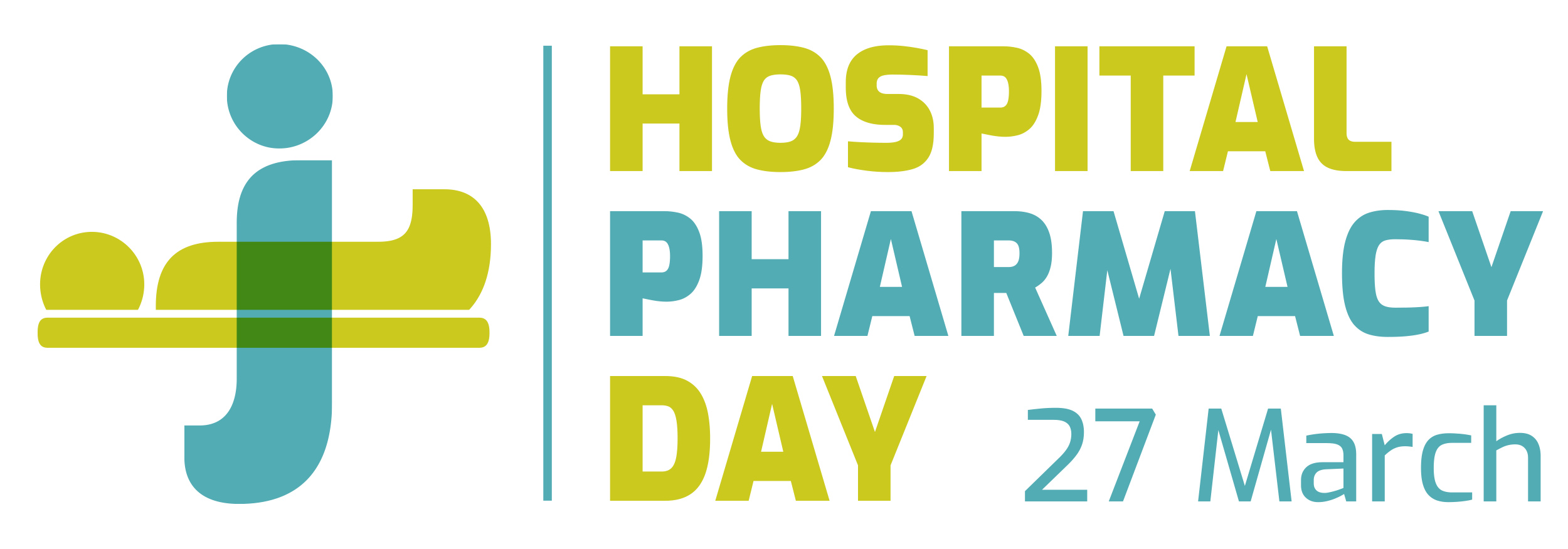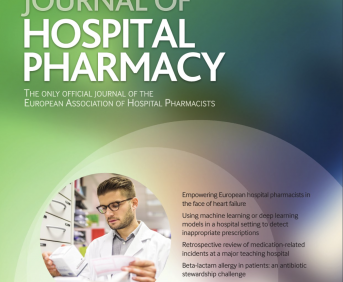IMPROVING AUTOIMMUNE FEVER DISEASE PATIENTS’ AMBULATORY TREATMENT- WHEN MEDICAL QUALITY MEETS EFFICIENCY
Pdf

European Statement
Patient Safety and Quality Assurance
Author(s)
R. Malberger
A. Shinawi
M. Hamed said
C. Hamza
Why was it done?
We developed a unique ambulatory medical and pharmaceutical service providing treatment for children with autoimmune diseases at Carmel hospital.
What was done?
The ambulatory children’s clinic in Carmel hospital provides several medical services for children including those with autoimmune fever diseases, treated with canakinumab (ILARIS), a monoclonal antibody drug .
The ILARIS is given individually at the clinic during morning hours simultaneously with other treatments. The dosage is calculated individually, the remaining drug goes to waste. The treatment is not supplied by a permanent medical team.
Our initiative aims to establish a specific multidisciplinary service for ILARIS patients which will increase the quality, safety and economic efficiency of the treatment.
How was it done?
1. The current medical service was analyzed including all needs and goals, infrastructures and obstacles.
2. The pharmacy presented a multidisciplinary plane addressing all goals and difficulties suggesting a specific time scheduled for ILARIS treatments exclusively, involving a personal rheumatologist, a trained nursing team and a pharmacist dispensing process.
3. Assessment tools including financial formulas and patients’ questionnaire were established before implementation began.
What has been achieved?
1. The patient receives the services of a personal rheumatologist and a familiar trained nursing staff.
2. From the pharmacy perspective the intervention led to a decrease in prescription, preparation and administration errors as well as an impressive economical decrease in the cost of drug waste, saving more than 400,000$ over 13 months.
3. Questionnaires collected show increase in patients and family satisfaction.
4. Patients do not loose school or work days.
5. Community bonds between families of ILARIS patients were formed.
What next?
creating a unique treatment plan for ILARIS patients, collaboration of nursing, pharmacy and medical teams led to a significant improvement in the quality of care, economic efficiency and an increase in the satisfaction of patients. Our initiative achieved its aim in a short time and can be
applied to a verity of medical services in diverse settings in any clinic or hospital worldwide.
TO IMPROVE TIMELY MEDICINES PROVISION AND ENSURE SAFE PRESCRIBING AS WELL AS SUPPORT EARLY DISCHARGE PLANNING TO IMPROVE FLOW INSIDE AND OUTSIDE AN NHS TRUST
Pdf

European Statement
Clinical Pharmacy Services
Author(s)
Christina Anastasiadou – Lead Pharmacist Acute & Emergency Medicine
Karen Dicks – Chief Pharmacy Technician Medicines Management
Radhika Patel – Pharmacy Technician MMS
Why was it done?
Until October 2023, the A&E department in Croydon University Hospital in London lacked a full-time pharmacy service, unlike other London trusts. This has contributed to suboptimal medicine management and a delay in the identification of prescribing errors. This has resulted in longer stays, missed medication doses, and a rise in patient safety incidences. At a hospital level this reduces flow and increases cost due to medication wastage. Ultimately, the aim is to improve the flow of patients within the hospital via timely medicines provision, early clinical pharmacy intervention and early discharge planning.
What was done?
We have obtained funding from the Better Care Fund for a period of 2 years. This funding is aimed at assisting local systems in effectively achieving the integration of health and social care in a manner that promotes person-centred care, sustainability, and improved outcomes for individuals and caregivers. Therefore, we introduced a full-time pharmacy service including one pharmacist and two medicines management technicians (MMTs)—one full-time and one part-time. This initiative was implemented as a 2-year trial period, using key performance indicators (KPIs) to evaluate its effectiveness.
How was it done?
Data has been collected against the below KPIS:
1) Number of drug histories completed on admission, before patient is allocated a ward (by MMT or pharmacist) per calendar month.
2) Number of medicines reconciliations completed (by pharmacist) per calendar month.
3) Number of clinical interventions completed by all members of the pharmacy team.
4) Savings secondary to the use of patient’s own drugs (PODs) brought from home for administration to reduce medicines wastage.
5) Savings due to the return of medicines to inpatient pharmacy for re-use from other patients when appropriate.
6) Time between request of medicines from pharmacy dispensary and medicine being dispensed, checked and released to A&E.
7) Review of stock lists in all areas in A&E.
8) Reduction in omitted doses.
9) Discharge medicines supply and screening from A&E to streamline discharge.
10) Number of patients counselled on their medicines and provided with patient-friendly information on them.
11) Number of referrals to community teams i.e allocated chemist via Discharge Medicines Service, Integrated Care Network (ICN) pharmacists or specialty teams (i.e anticoagulation clinic for newly initiated anticoagulant) to provide continuation of care.
12) Liaising with specialty teams within the hospital to expedite review and treatment in a time efficient and cost-effective way.
What has been achieved?
The current pharmacy team is fully integrated into the A&E service and has contributed significantly towards advancing patient experience, via early pharmacy engagement with patients. During the first 10 months of the project, we have data to show:
1) A 540% increase in drug histories and medicines reconciliation on admission.
2) A 19.525% increase in clinical interventions and early detection of medication errors.
3) We have completed 5 teaching sessions so far, in order to tackle common prescribing and medicines management inaccuracies and embedding solutions into nurses and doctors training.
4) We have contributed towards the reduction in omitted doses by 6%.
Positive contribution towards tackling medicines wastage has been shown too. Our team contributed towards saving £13.110 from April to September 2024 by using PODs for administration in hospital and £10.483 by returning dispensed medications to the inpatient pharmacy for recycling and use for other patients for the same time period.
In addition, the team has completed 66 referrals to the community pharmacy team for follow up on newly started medicines, stopped medicines, adherence concerns and polypharmacy. This is in order to provide continuous care and establish follow-up after discharge from hospital.
All in all, improved safe patients flow in and out of hospital.
What next?
Work towards a business case for a permanent pharmacy service in A&E, to continue further developing the above. Utilise all the skills our MMTs hold, in order to continue working on patient safety, improved flow and cost improvement plans. Introduce a pharmacist-prescriber who will be able to tackle arising problems as soon as possible and provide high quality care in liaison with doctors, nurses and advanced care practitioners.
Reconciliation of weekly methotrexate for non-oncologic use: results from a prospective cohort
Pdf

European Statement
Clinical Pharmacy Services
Author(s)
Adrian Viudez-Martinez, Ana Ramirez-Lopez, Javier Lopez-Nieto, Geronima Riera, Eduardo Climent-Grana
Why was it done?
Medication errors harm at least 1.5 million people every year. According to the Institute for Safe Medication Practice (ISMP), ongoing errors with oral methotrexate (MTX) for non-oncologic use suggest that more needs to be done to reduce the risk of patient harm, especially considering its potentially severe side effects.
What was done?
Identification and prevention of MTX-related medication errors for non-oncologic use by medication reconciliation at hospital admission. Analysis of errors’ type prevalence were also performed.
How was it done?
Design: prospective cohort performed in a tertiary hospital from September 2021 to April 2023.
Inclusion criteria: Inpatients with weekly methotrexate for non-oncologic use.
Intervention applied: medication reconciliation comparing inpatient’s e-prescription, clinical record, outpatient medication history and pharmacist-driven interview.
Data analysed: demographic data (age, sex, admission cause) treatment-related data (indication, methotrexate and folic acid posology, administration route, day of the week).
What has been achieved?
Out of 79 admission episodes (53.1 % men, median age: 72 years (range: 18-96 years), 63 (80% )were urgent.
Most patients had been prescribed methotrexate for rheumatoid arthritis (n=56), but also for polyarthritis (n=9), psoriatic arthritis (n=8), pulmonary sarcoidosis (n=2), pemphigus (n=1), spondylarthritis (n=1) and Still syndrome (n=1).
Methotrexate doses’ frequency were: 15 mg (28.9%), 10 mg (27.6%), 20 mg (11.9%), 7.5 mg (9.2%), 25 mg (7.9%), 12.5 mg (6.6%), 17.5 mg (5.3%) and 5 mg (2.6%).
Medication errors were identified and prevented in 38 out of the 77 episodes recorded (49.4%). There were classified as follows: dose (38.5%), day (17.9%), dose and day (17.9%), dose and administration route (10.3%), omission (10.3%), administration route (2.6%) and lack of indication (2.6%).
Folic acid doses’ frequency was: 10 mg the day after MTX (47%), 5 mg the day after MTX (28%), 5 mg daily except the same day as MTX (17%), 15 mg the day after MTX (8%).
Medication errors were identified and prevented in 51 out of the 77 episodes recorded (66.2%). There were classified as follows: omission (38.8%), day (33.3%), day and dose (16.7%), dose (9.3%) and drug (1.9%).
What next?
Performing medication reconciliation in every admission, measuring its potential benefits using validated tools for clinical pharmacists’ intervention assessment, such as the CLEO tool, which can, ultimately, serve as preamble to objectively measure the pharmacists’ impact in healthcare efficiency and patients’ safety.
EVALUATION OF RENAL DRUG DOSING ADJUSTMENT IN CHRONIC KIDNEY DISEASE PATIENTS
European Statement
Patient Safety and Quality Assurance
Author(s)
Pilar Fernández-Villacañas Fernández, Manuel Ríos Saorín, Patricia Ortiz Fernández, Alba María Martínez Soto, Consolación Pastor Mondéjar, Carmen Caballero Requejo, Lorena Rentero Redondo, Alberto Quesada Asencio, Elena Urbieta Sanz
Why was it done?
Due to kidney pathologies affect the normal pharmacokinetics of many drugs, it is necessary to adjust the dose of the drug for each patient. It is also necessary to ensure effectiveness and safety for the hospitalized patients with renal failure, associated with higher morbidity and mortality. The main objective is to minimise validation and prescription errors.
What was done?
A review of drug dosing according to the patient´s creatinine clearance was performed. This dose adjustment was included as alerts in the electronic prescription system.
How was it done?
For each drug, the data of the dosage adjustment in patients with renal impairment were compiled by consulting the technical data sheets and the national guidelines. In the case of antimicrobials, the information was obtained from the Antimicrobial Therapy Guide 31th Edition March 2021. The data were organized in an Excel table to later integrate them into the hospital’s electronic prescription system.
What has been achieved?
The dose adjustment was made for 848 presentations of different drugs: antibacterials (186), antipsychotics and antidepressants (109), antiepileptics (63), opiates (57), antivirals (49), NSAIDs (26), diuretics (24), anticoagulants (22), antimycotics (21), antidiabetics (15), antiparasitics (11), antiemetics (11), antitumors (4), among others. A large number of drugs are highly dependent on kidney function, especially antibacterials, antipsychotics and antidepressants, making that an incorrect dosage of renal drugs can worsen kidney function and produce toxic effects due to their accumulation.
What next?
This dosage adjustment for patients with renal failure should be periodically reviewed by the hospital’s pharmacy service in order to keep the alerts of the electronic prescription system up-to-date. Additionally, this system can be implemented for other pathologies such as liver failure, or to avoid overdose by establishing the maximum dose limit allowed. In conclusion, the importance of an adequate electronic prescription program that facilitates daily clinical practice is established, preventing possible medication errors.
DYSPHARMA: AN ITALIAN WEB-APPLICATION FOR DRUG THERAPY MANAGEMENT IN DYSPHAGIC PATIENTS (submitted in 2019)
Pdf

European Statement
Patient Safety and Quality Assurance
Author(s)
Serena Logrippo, Giulia Bonacucina, Matteo Sestili, Alessandro Caraffa, Marco Cespi, Roberta Ganzetti
Why was it done?
Dysphagia is a well-known community issue that affects primarily aged people [1]. The availability of appropriate dosage forms for dysphagic patients is essential to guarantee therapy adherence. Extemporaneous compounding of SODSs (e.g. crushing tablet or opening capsules and dispersing the obtained powder in an appropriate base or vehicle) is a common practice due to the unavailability of different dosage forms to satisfy the current needs of patient. However, compounding practice is neither risk-free nor error-free [2]. The aim of the work was to realise a web application to support HCPs in drug therapy management of dysphagic patients.
What was done?
To properly manage oral therapy in dysphagic patients, a multidisciplinary team developed an algorithm and applied it to over 8000 medicinal products available as solid oral dosage forms (SODSs). A web-based, decision-making tool was launched to support healthcare providers (HCPs) during the prescription, compounding and administration of SODFs to dysphagic patients.
How was it done?
An extensive review of the Italian pharmaceutical market database, product characteristic summaries and scientific literature were used for data collection. For each prescription drug formulated as SODF, an information sheet was elaborated and continuously updated.
What has been achieved?
DysPharma (www.dyspharma.it) is an on-line support currently available and under restyling. By registering and logging-in, it is possible to access technical content that comprises medicinal product details, drug-food interactions, extemporaneous compounding methods, and risk symbols. Medicinal products can be searched by active ingredient name, medicinal product name, and marketing authorisation.
Customised symbols are reported for: do not crush tablets or open capsules, do not split tablets, to wear personal protection devices in case of manipulation of hazardous drugs, and drug associated with dry mouth.
What next?
This decision support tool may be integrated with computerised medical records to reduce medication-prescribing and administering errors and to improve clinical outcomes of dysphagic patients.
References:
[1] Clavé, Pere, and Reza Shaker. “Dysphagia: current reality and scope of the problem.” Nature Reviews Gastroenterology & Hepatology 12.5 (2015): 259. [2] Logrippo, Serena, et al. “Oral drug therapy in elderly with dysphagia: between a rock and a hard place!” Clinical interventions in aging 12 (2017): 241.
ALGORITHM OF SAFE AND CORRECT PREPARATION OF CHEMOTHERAPY (submitted in 2019)
Pdf

European Statement
Patient Safety and Quality Assurance
Author(s)
Marijana Fortuna, Petra Tavčar, Jure Dolenc, Monika Sonc
Why was it done?
To support us in understanding our role in the preparation of chemotherapy products. To prevent the risk of harm to patients. Recognise prescribed error in pre-documented chemotherapy protocols
What was done?
Cytostatics are carcinogenic, mutagenic and teratogenic drugs. Handling requires a number of organisational and technical systems. All products should be safely and accurately prepared with special care to ensure the highest possible product quality, correct dose, the right patient, the right medicine, the right carrier solutions and right administration, without microbiological and particle contamination. The prescription and preparation of cytostatic drugs must be closely monitored. The most important factor in achieving this is the constant training of pharmacists in pharmaceutical techniques.
How was it done?
This year started with monthly reviews and training in the following subjects by using a written algorithm. Risk to product: Drugs reconstitution negative pressure isolators, leakage/damage or defects of vials, particles, transport and storage. Risk to patient: Incorrect calculations, microbiological contamination, incorrect administration, extravasation, incorrect administration route, incorrect labelling. Risk to operators: Contamination, toxicity, equipment, gloves, cleaning, occupational exposure. All checks have been made throughout the whole of preparation process, adhering to standard operating procedures (SOP-s).
What has been achieved?
We concluded that continuing education by using a writhen algorithm is useful practice. It helps prevent automatic work, remind us to check each step in process and know how to recognise errors in chemotherapy prescriptions and preparation. In 25 cases of prescribed chemotherapy, intervention of a pharmacist was required. In 5 cases of chemotherapy preparation, pharmaceutical techniques have detected a discrepancy in the prescribed therapy.
What next?
Regardless of experience at work, it is necessary to constantly repeat how to work properly, and awareness why we are doing this.
SAFE PRESCRIBING METRICS FOR HOSPITAL PHARMACY (submitted in 2019)
European Statement
Patient Safety and Quality Assurance
Author(s)
Oran Quinn, Anna Marzec
Why was it done?
Errors of miscalculation, doses inappropriate for renal function and at extremes of weight were reported when doses of medication were written as ‘mg/kg’ without stating the dose to be given e.g. Gentamicin 5mg/kg, Vancomycin 15mg/kg and Enoxaparin 1.5mg/kg.
What was done?
A quality improvement initiative to resolve issues with prescribing medications dosed by weight. Nursing staff were identified as ‘gate-keepers’ who could refuse to administer medication inappropriately prescribed. Identification, agreement, education and feedback were necessary to change prescribing practice and support nursing staff. Hospital doctors were required to calculate and prescribe the total dose to be given. Feedback was given by monthly bulletin.
How was it done?
Support from key stakeholders was sought to endorse the initiative. Verbal and written education was given to nursing, medical and pharmacy staff to implement the initiative on an agreed date. Refusal to administer medication unsafely prescribed was key to successful implementation. Patient’s weight was not always available and additional equipment was provided to overcome this problem. The risk of withholding treatment was considered and an escalating referral process was recommended contacting the Senior House Officer, then Registrar and ultimately the patients Consultant to avoid lengthy delays to patient treatment. Nurses felt supported in refusing to administer medication.
What has been achieved?
A point prevalence study of all inpatients was carried out monthly to ascertain the level of compliance Mar-19 Apr-19 May-19 Jun-19 Jul-19 Aug-19 % of patients with total dose prescribed correctly 67.0 86.7 96.7 100.0 100.0 88.9 87.5. Results showed overall improvement from March to August and full compliance in May and June. Success was achieved through a multidisciplinary approach involving all key stakeholders, a forcing function and support from and for front line staff.
What next?
This initiative has been further developed to become ‘Monthly Safe Prescribing Metrics’.
Other prescribing metrics such as using ‘iu’ dosing for Insulin, prescribing appropriately for patients at extremes of weight and using the abbreviation ‘mcg’ for medications dosed in ‘micrograms’ were included. Initiatives to improve all metrics are ongoing.
Safe prescribing metrics could help to positively influence prescribing culture in other healthcare settings.
ELIMINATION OF THE RULE-OF-SIX IN A TERTIARY HOSPITAL
European Statement
Patient Safety and Quality Assurance
Author(s)
Mohammed Almeziny, Ali Alkhudair , Fahad Alkharji
Why was it done?
The Rule-of-Six has been used in hospitals for many years. in the last years it has been under investigations due to the variable concentrations that result when making the calculation to mix critical medication drips. The rule, or formula, multiplies a patient’s weight (Kg) by 6 to determine the dose of a medication (mg) to be added to an appropriate diluents for a total volume of 100 mL. The rate in mL/hr is equivalent to the dose in mcg/kg/min. Therefore, for each patient, there would be a different concentration infused, although the rate/dose would be the same. In addition, the drastic changes in a patient’s weight would require compounding a new drip.
What was done?
developed and implemented a standardised list of IV medication concentrations across a tertiary hospital to enhance medication safety.
How was it done?
A task group was formulated from all involved parties to standardise I.V. infusion concentrations. The task group adopted the following strategies: first strategy is enhancing safety through standardised and limited concentrations available, simplifies calculations and minimise its effect on fluid restriction patients. Second strategy the concentration should be broadly applicable through meets needs of 80-90% patients, frequently used in current practice and appropriate for peripheral as well as central lines and the third strategy is developing comprehensive IV references using guideline validated by expert review and stakeholder consensus, education and training of stakeholders, comprehensive drug information, appendices for specialty settings and populations (ICU, NICU etc) and index of commercially available ready to administer finally these strategies are subjected to periodic revision and update. Infusion charts were developed to facilitate use of standardised concentration
What has been achieved?
Within 9 months the task group were able to eliminate the rule of six and created a list of standardised IV concentration. The hospital has successfully implemented a standardised IV infusion concentrations. The multidisciplinary consensus was achieved. The list of standardised IV concentration meets patient safety goals and provides numerous safety features. In addition system is highly efficient on a day to day practice as well as it is highly adaptable to most patient groups.
What next?
The health information system will be used to calculate the infusion rate





